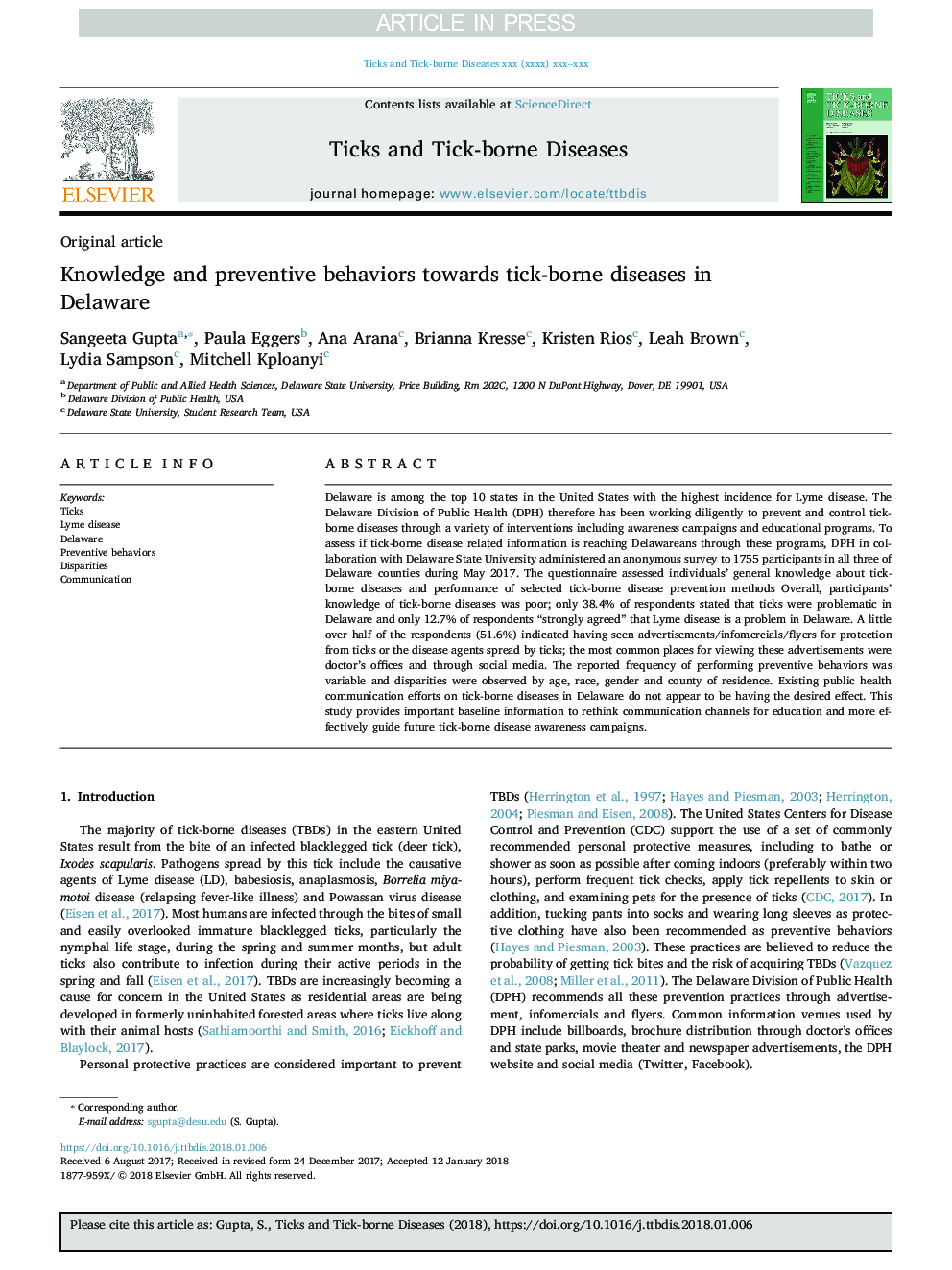| Article ID | Journal | Published Year | Pages | File Type |
|---|---|---|---|---|
| 8507273 | Ticks and Tick-borne Diseases | 2018 | 8 Pages |
Abstract
Delaware is among the top 10 states in the United States with the highest incidence for Lyme disease. The Delaware Division of Public Health (DPH) therefore has been working diligently to prevent and control tick-borne diseases through a variety of interventions including awareness campaigns and educational programs. To assess if tick-borne disease related information is reaching Delawareans through these programs, DPH in collaboration with Delaware State University administered an anonymous survey to 1755 participants in all three of Delaware counties during May 2017. The questionnaire assessed individuals' general knowledge about tick-borne diseases and performance of selected tick-borne disease prevention methods Overall, participants' knowledge of tick-borne diseases was poor; only 38.4% of respondents stated that ticks were problematic in Delaware and only 12.7% of respondents “strongly agreed” that Lyme disease is a problem in Delaware. A little over half of the respondents (51.6%) indicated having seen advertisements/infomercials/flyers for protection from ticks or the disease agents spread by ticks; the most common places for viewing these advertisements were doctor's offices and through social media. The reported frequency of performing preventive behaviors was variable and disparities were observed by age, race, gender and county of residence. Existing public health communication efforts on tick-borne diseases in Delaware do not appear to be having the desired effect. This study provides important baseline information to rethink communication channels for education and more effectively guide future tick-borne disease awareness campaigns.
Related Topics
Life Sciences
Agricultural and Biological Sciences
Animal Science and Zoology
Authors
Sangeeta Gupta, Paula Eggers, Ana Arana, Brianna Kresse, Kristen Rios, Leah Brown, Lydia Sampson, Mitchell Kploanyi,
